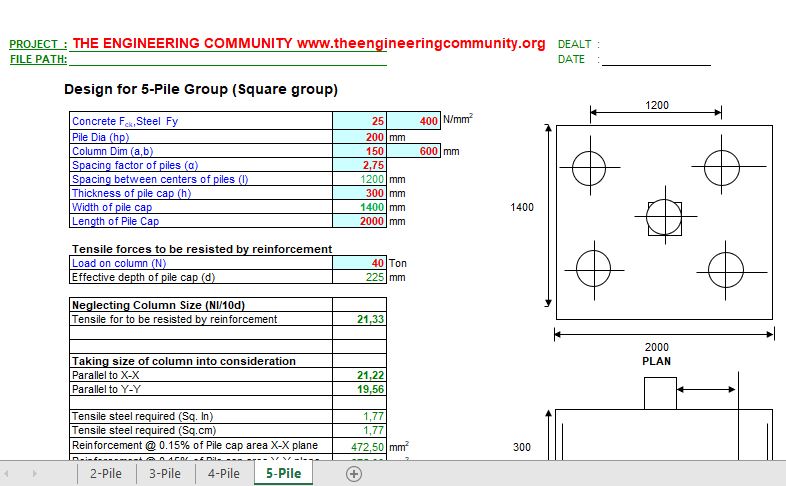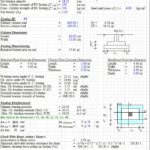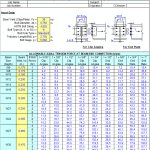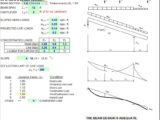
Pile Cap Design and Calculation Spreadsheet
3 May 2025Table of Contents
Pile Cap Design and Calculation Spreadsheet
When it comes to constructing stable and long-lasting buildings, foundation engineering plays a vital role. One essential but often overlooked component in deep foundation systems is the pile cap. Whether you’re a civil engineer, architecture student, or curious homeowner, understanding pile caps can give you valuable insight into how strong structures stand tall.
What Is a Pile Cap?
A pile cap is a thick concrete mat that rests on top of piles, which are long columns driven deep into the ground to support heavy structures. The pile cap serves to distribute the load from the building’s superstructure evenly across the piles, ensuring that the foundation remains stable even in poor soil conditions.
Pile caps are typically used when the surface soil lacks the strength to support a building on its own. They’re common in high-rise buildings, bridges, towers, offshore platforms, and other heavy-duty constructions.
Why Are Pile Caps Important?
Pile caps play a crucial role in foundation stability. Here’s why they matter:
1. Load Distribution
Pile caps act as a unified base, transferring vertical and lateral loads from the structure to the piles below.
2. Structural Integrity
They link multiple piles together, allowing them to work as a single unit and reduce the risk of individual pile failure.
3. Resistance to Settlement
In areas with soft or shifting soils, pile caps help resist differential settlement, keeping the building level over time.
Types of Pile Caps
Pile caps vary in shape and design depending on the number and arrangement of piles. Common types include:
-
Triangular pile cap (for 3 piles)
-
Rectangular pile cap (for 4 piles or more)
-
Circular pile cap (less common, for clusters)
-
Irregular shape (custom-designed for unique loads or pile arrangements)
The geometry ensures that the center of gravity of the pile group aligns with the load center, reducing bending and shear stress.
Pile Cap Design Basics
The design of a pile cap depends on several factors:
-
Load from the structure
-
Pile layout and spacing
-
Soil bearing capacity
-
Concrete grade and reinforcement requirements
Engineers use software like STAAD Pro, AutoCAD, SAFE, or ETABS for design and modeling. The goal is to create a cap that is both economical and structurally sound.
Construction Process
The construction of a pile cap follows a precise sequence:
-
Pile installation – Bored or driven piles are placed deep into the ground.
-
Excavation – Soil is removed to the required depth.
-
Pile head cutting – Excess concrete is chipped away to expose rebar.
-
Formwork and rebar placement – A mold is prepared, and steel reinforcement is placed.
-
Concrete pouring – High-strength concrete is poured and cured.
Proper quality control and supervision during this process is essential to ensure safety and durability.
Common Mistakes to Avoid
-
Incorrect pile alignment – Can lead to eccentric loading and foundation failure.
-
Insufficient cover or reinforcement – Reduces lifespan and load capacity.
-
Poor curing of concrete – Affects strength and integrity.
Hiring experienced contractors and following international standards like ACI or Eurocode can prevent these issues.
Pile Cap vs Raft Foundation
Many people confuse pile caps with raft foundations, but they serve different purposes. A raft foundation spreads the load across a wide area, typically in shallow soils. A pile cap, on the other hand, channels the load deep into the groundusing piles.
Use pile caps when:
-
The soil is weak at shallow depths.
-
The load is concentrated and heavy.
-
Space constraints prevent a wide foundation.
Conclusion
A pile cap might be hidden underground, but its role in structural safety is massive. From skyscrapers to bridges, these concrete platforms ensure that heavy loads are spread evenly and efficiently, giving your structure a strong and stable start.








